There is a wide range of white marble types. The chromatic uniformity of its base, the type of grain, and the thickness, as well as drawing of its veins, are characteristic and unique to each variety.
Thassos White :- Is a white dolomite marble. It has a crystalline base and is recognized worldwide for being one of the whitest marbles around the world.Its name is inspired by the Greek island of Thassos, a paradise famous for its white houses and sands. Saliara beach on the island of Thassos is known as the “marble beach” for its clarity and transparency.

Calacatta :-Is a natural stone from Italy. It is a calcitic white marble. It has a very peculiar chromatism, in which broken white and very fine light grey veins are punctually dotted with tiny amber and golden notes.This Italian variety has lasted for centuries and is the protagonist of many relevant architectural projects dated in the period of classical Rome, the Renaissance and the Baroque. Nowadays, it is considered a luxury marble and dresses the interiors of large residential or hotel projects.

Lilac :- Is a white calcite marble. It has a slightly greyish-white base. The veins that furrow this marble have an arborescent morphology and combine tones ranging from black to violet.
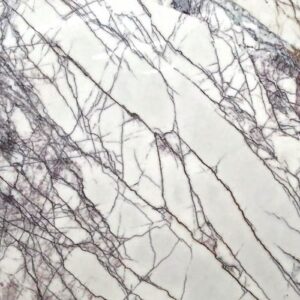
Bianco Lasa :- Is a white calcite marble. It has a white crystalline base and distinctly linear bluish-grey veins. The soft combination of whites and greys punctually intersperses one or two prominent thick black vein.
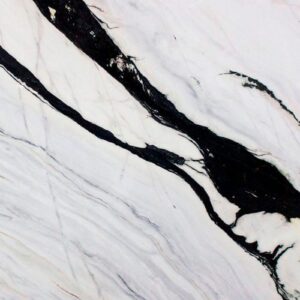
Calacatta Gold:- Is a white calcite marble with a timeless aesthetic. It exhibits a sublime off-white base with outlined golden and grey streaks of different thicknesses.
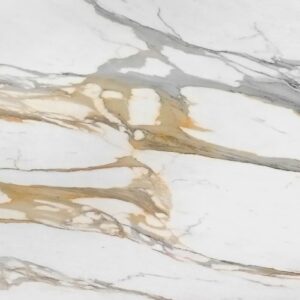
Calacatta Lincoln :-Although it may seem like an Italian variety, Calacatta Lincoln comes from Colorado, United States. It is named after the material used to build the Lincoln Memorial Centre in the early 1900s in Washington, DC. Calacatta Lincoln is a white calcite marble. Its white base is glazed in smoky tones. The veins are unsettled and have a beautiful gray color that occasionally turns silver.
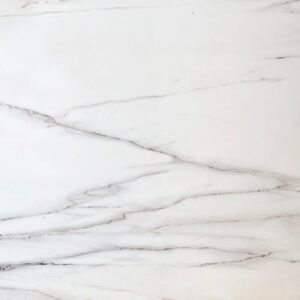
Bianco Carrara marble:- As its name suggests, comes from the Carrara quarries in the Tosco-Emilian Apennines. Its homogeneous greyish white base is composed of fine, shiny particles. Its veins are grey in color and are distributed over the surface as capillaries. There are different classifications of Bianco Carrara, and its level of whiteness defines each group.
It is one of the most famous marbles in the world, both today and in the distant past, through the Renaissance and Baroque. Michelangelo Buonarroti used Carrara White marble to sculpt the famous sculpture of David.
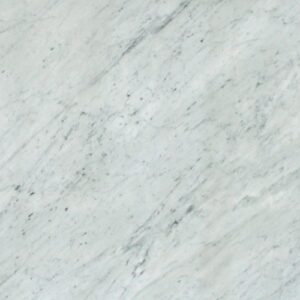
Statuarietto:- Is extracted in Carrara as well. It is a unique compact white, medium-fine grain marble. Its white base intermingles shades of pale grey and alborea indigo. The veins present a bluish grey tonality.It is ideal to be used for interior floors and walls, as well as kitchen worktops.
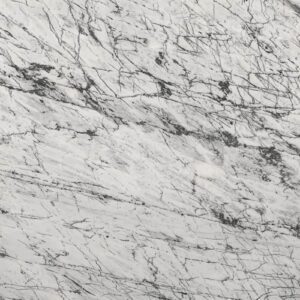
Arabescato :- Breccia is a white calcitic marble. Its particular breccia morphology offers a beautiful game of contrasts between the white background and the grey and brown veins.
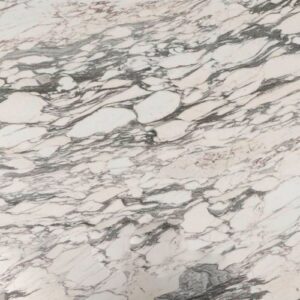
Macael White:- Is a famous Spanish white marble. It is extracted in the region of Macael (Almeria, Spain) which is also the origin of its name. Macael White is the protagonist in great architectural projects of the history and art of Spain. An example of this is the Patio de Los Leones of the Alhambra Palace (Granada).Blanco Macael marble is calcitic, has a coarse grain, and a uniform appearance alternating white and grey shades in the form of glazes. Calcite is the main mineral of this natural stone (98%), including as additional components quartz, muscovite and mineral opaques.


